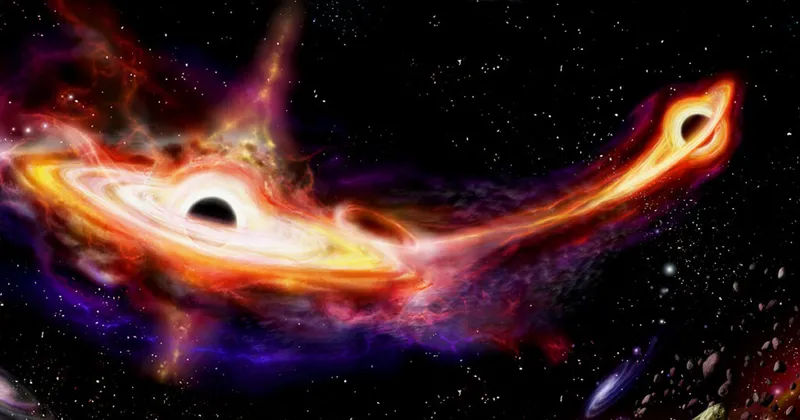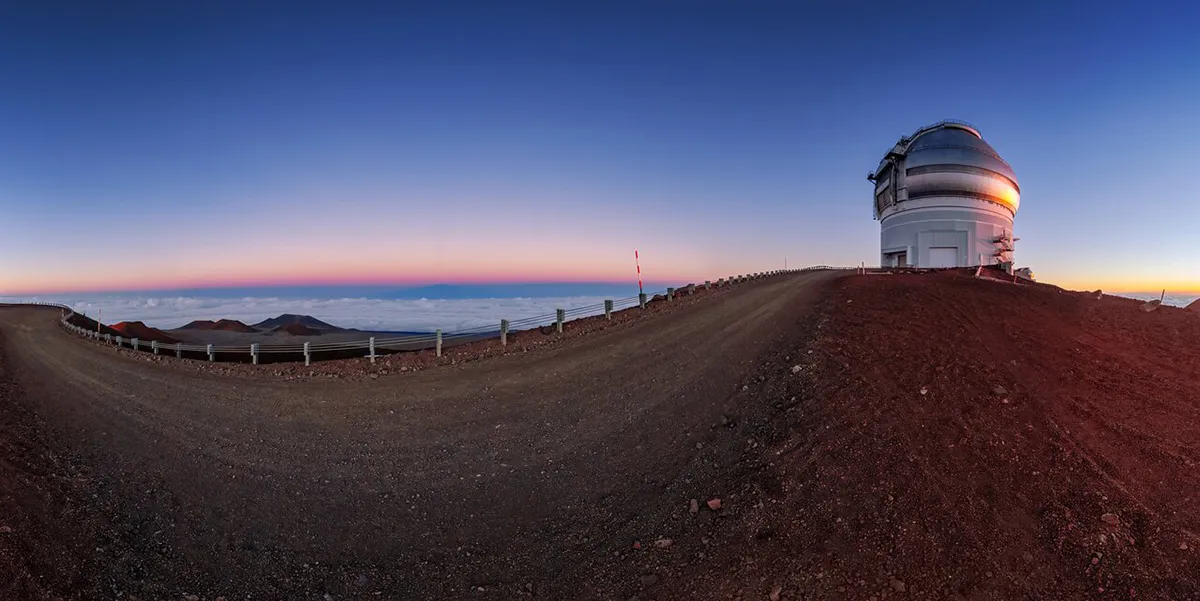A pair of supermassive black holes that have been trapped dancing around each other for billions of years have now been found to be the heaviest binary ever measured.
Though theory predicts that such pairs of supermassive black holes should merge together, the act of merging has never actually been seen.
The huge mass of this pair could help astronomers understand why such mergers are seemingly so rare.
The pair are located in B2 0402 379, an enormous ‘fossil cluster’ galaxy created when an entire cluster’s worth of galaxies and stars merged into a single giant elliptical.

Most galaxies host a central supermassive black hole.
When galaxies merge, these begin orbiting around one another.
As they circle, they transfer some of their energy to the surrounding stars and gas – much of which is ejected in the process.
The more energy these black holes lose to the material around them, the closer they move towards each other.
In the case of this binary pair, the black holes moved in until they were a mere 24 lightyears apart – the smallest such separation ever directly measured.
However, they have remained stuck at this distance for the last three billion years.
To understand why this might be the case, astronomers have used the Gemini North telescope’s Gemini Multi-Object Spectrograph (GMOS) to study the system.

"The excellent sensitivity of GMOS allowed us to map the stars’ increasing velocities as one looks closer to the galaxy’s centre," says Roger Romani from Stanford University, who took part in the study.
"With that, we were able to infer the total mass of the black holes residing there."
The binary is estimated to weigh in at 28 billion times that of the Sun, making it the heaviest ever measured.
As well as giving vital context to the formation of this specific binary system and its past within the galaxy, the measurement also gives support to the idea that the stalling of binary supermassive black holes is linked to their huge masses.
The amount of gas and stars that would have to be ejected in order to move such massive black holes this close to each other would be enormous.
"Normally it seems that galaxies with lighter black hole pairs have enough stars and mass to drive the two together quickly," says Romani.
"Since this pair is so heavy, it required lots of stars and gas to get the job done. But the binary has scoured the central galaxy of such matter, leaving it stalled."
